44 in stock
$ 59.00
Length: 8cm | 3.15″
Width: 2.5cm | 1″
Height: 3cm | 1.2″
Weight: 100g | 0.22Lbs
80 Patches
5 Footswitches + Bank Up and Bank Down
4 Loops for Effects Selection
MIDI Output
USB A Output for connection to USB devices
USB Type-C Output for connection to computer and software updates
Expression Pedal Input
2 RemoteSwitch Outputs for amplifier channel control, tap tempo, etc.
Wireless Antenna for wireless communication
Color LCD Graphic Display
Usual application of a buffer, right at the entrance to the board.
It’s possible to put the buffer at pedalboard input as well as the output in an ultra-compact size. (2x Stereo Y Cable Required)
It is also capable of splitting the signal, allowing dual amp connections! (Stereo Y Cable Required)
In Stereo mode, it will be able to buffer the left and right side of the signal. (TRS Cable
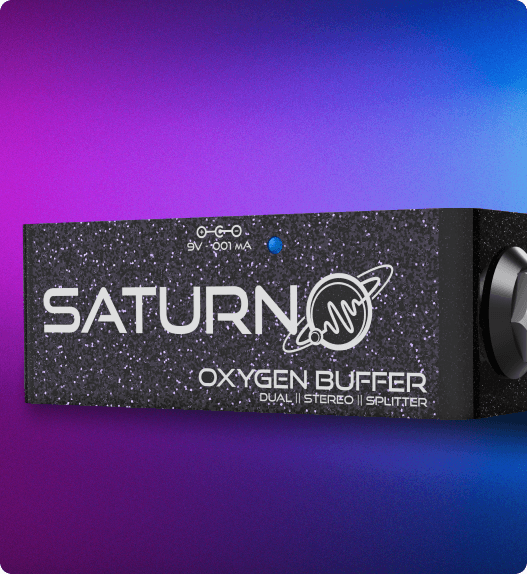
This switch is used to select the operating mode of the Buffer.
The diagram of the functioning of the different operating modes can be found in the manual.
It is recommended that the Oxygen Buffer be the first piece of equipment in your chain, right after the guitar. In this position, it will bring the greatest benefits to your signal.
However, it is important to note that the Buffer should be positioned after Fuzz effects and Vintage Wah pedals, as these devices can alter the tone when they are not in direct contact with the guitar.
Additionally, other positions that bring benefits to the signal include:
The guitar is known to have a high output impedance. With this high impedance, even a small capacitance present in the cable can create a filter that starts to attenuate the audible high frequencies, resulting in a loss of brightness in the tone.
By using the Oxygen Buffer, it has the ability to convert the guitar’s high impedance to a low impedance output. Once the signal is at low impedance, the filter formed begins to act in an ultra-high frequency region, well beyond the audible frequencies. This allows the signal to maintain all its integrity, without suffering brightness loss due to the filter formed between the guitar and the cable, resulting in a more faithful, clean, and accurate tone.
Additionally, another benefit of the low output impedance is the improvement in the impedance matching between the guitar and its effects/amplifier. This allows 100% of the signal to be transmitted to the effect/amplifier, whereas a signal with high impedance suffers losses. This improvement in impedance matching contributes to a complete signal transmission, ensuring a reproduction with more punch and dynamic tone of the guitar.
You can find the entire update procedure for your controller in the video (Hyperlink). Additionally, detailed instructions are also available in the product manual.
If the power in your city went out during the update of your controller and now you’re facing a white screen, don’t worry. There’s a recovery procedure that will solve this problem:
This procedure will fix the white screen and allow you to resume using your controller without issues.
44 in stock
$ 59.00
Length: 8 cm (3.15 inches)
Depth: 2.5 cm (0.98 inches)
Height: 3 cm (1.18 inches)
Weight: 0,210 kg (0,46 lbs)
Converts the guitar’s high impedance into an ultra-low impedance output.
Check out the most commonly used options below and find the best one for you!
Standard buffer application, placed right at the input of the board.
In Stereo mode, it will buffer both the left and right sides of the signal.
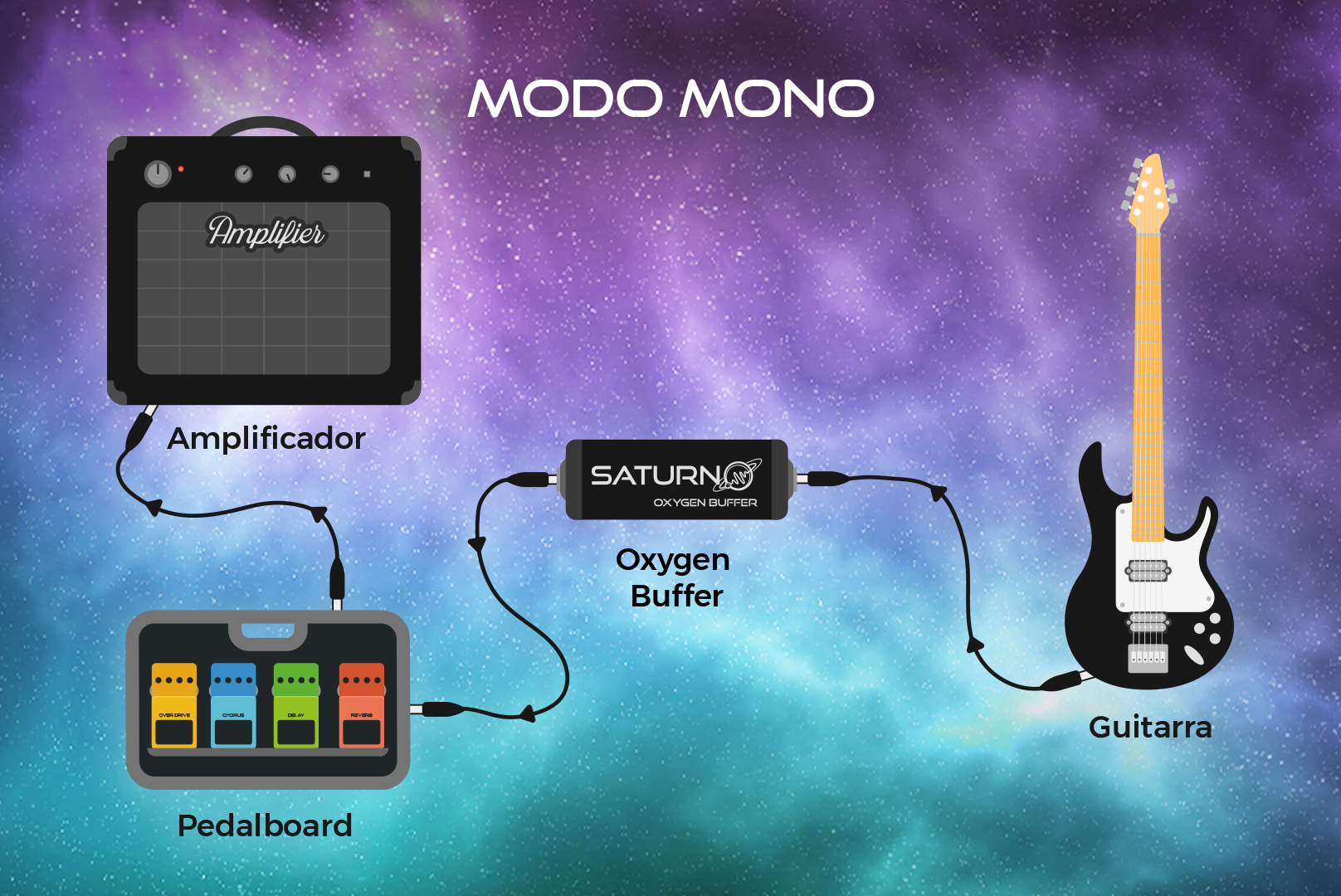
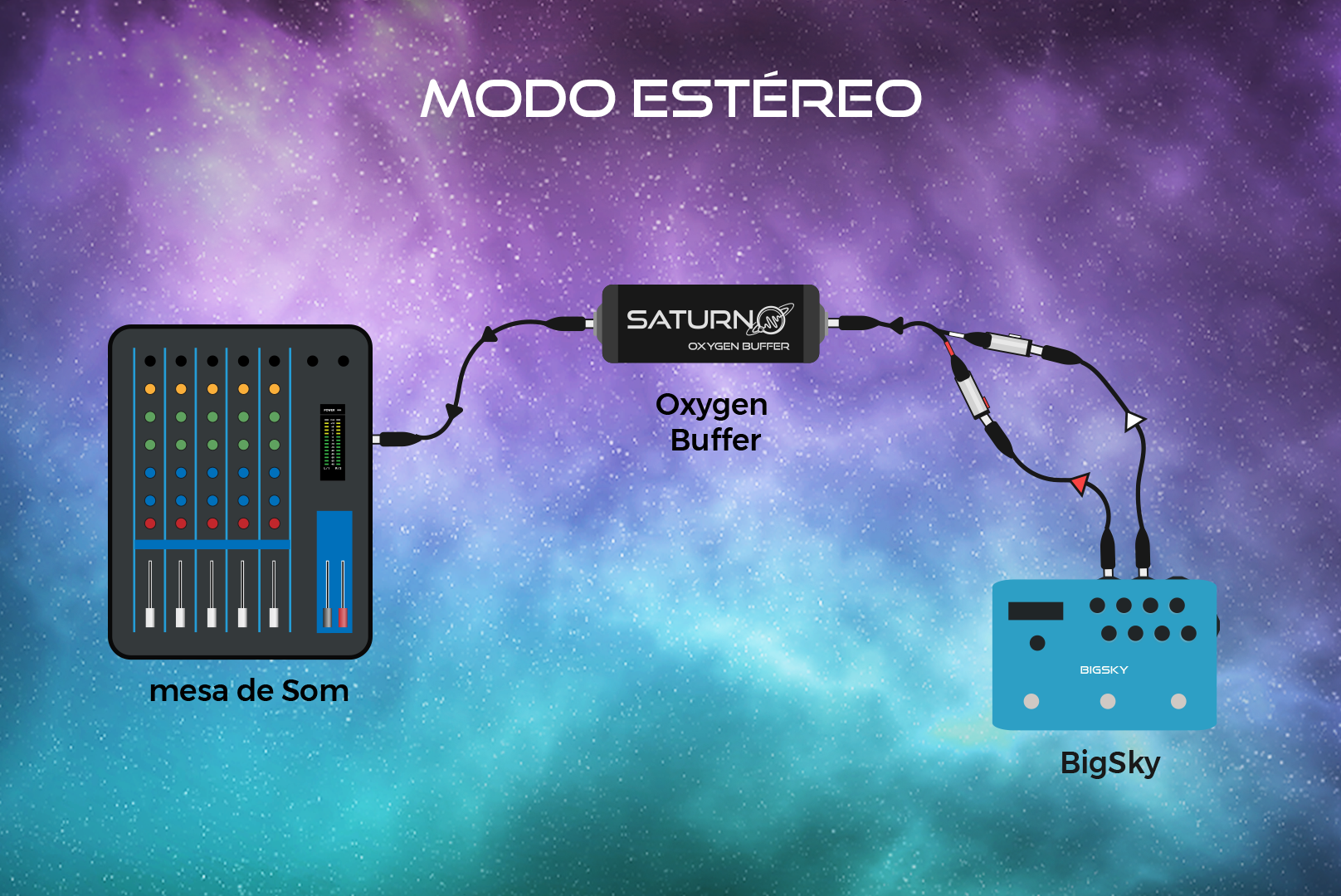
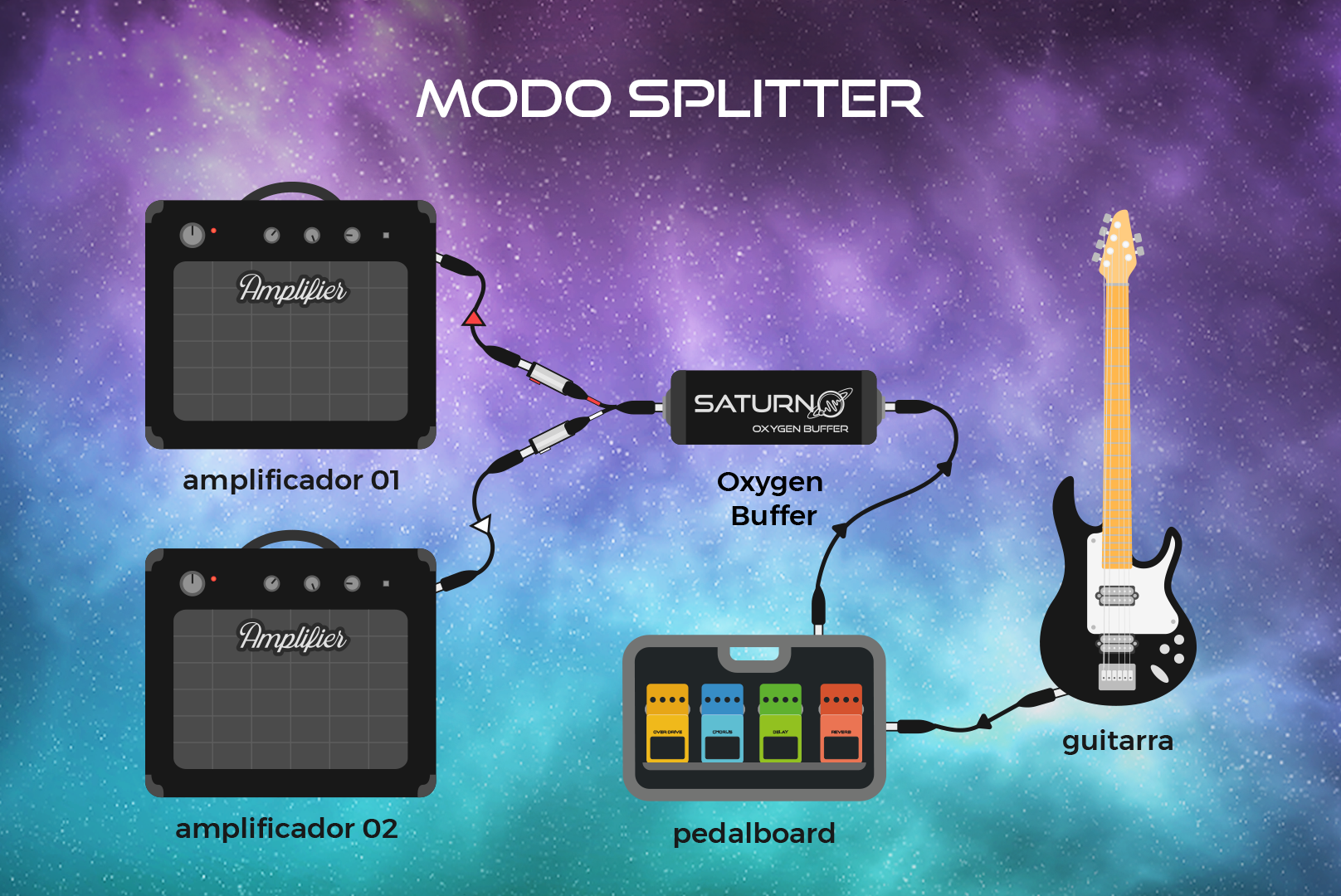
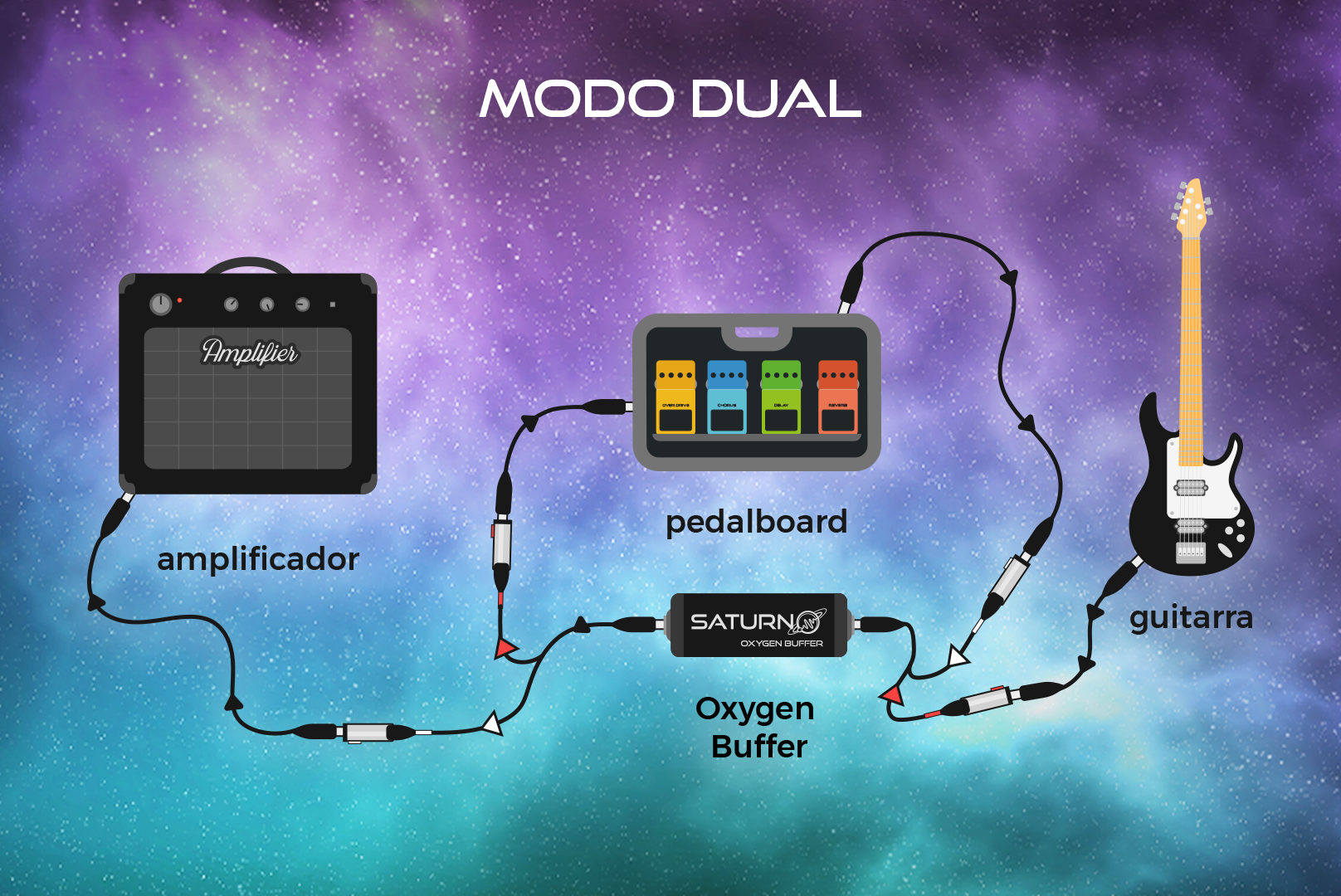
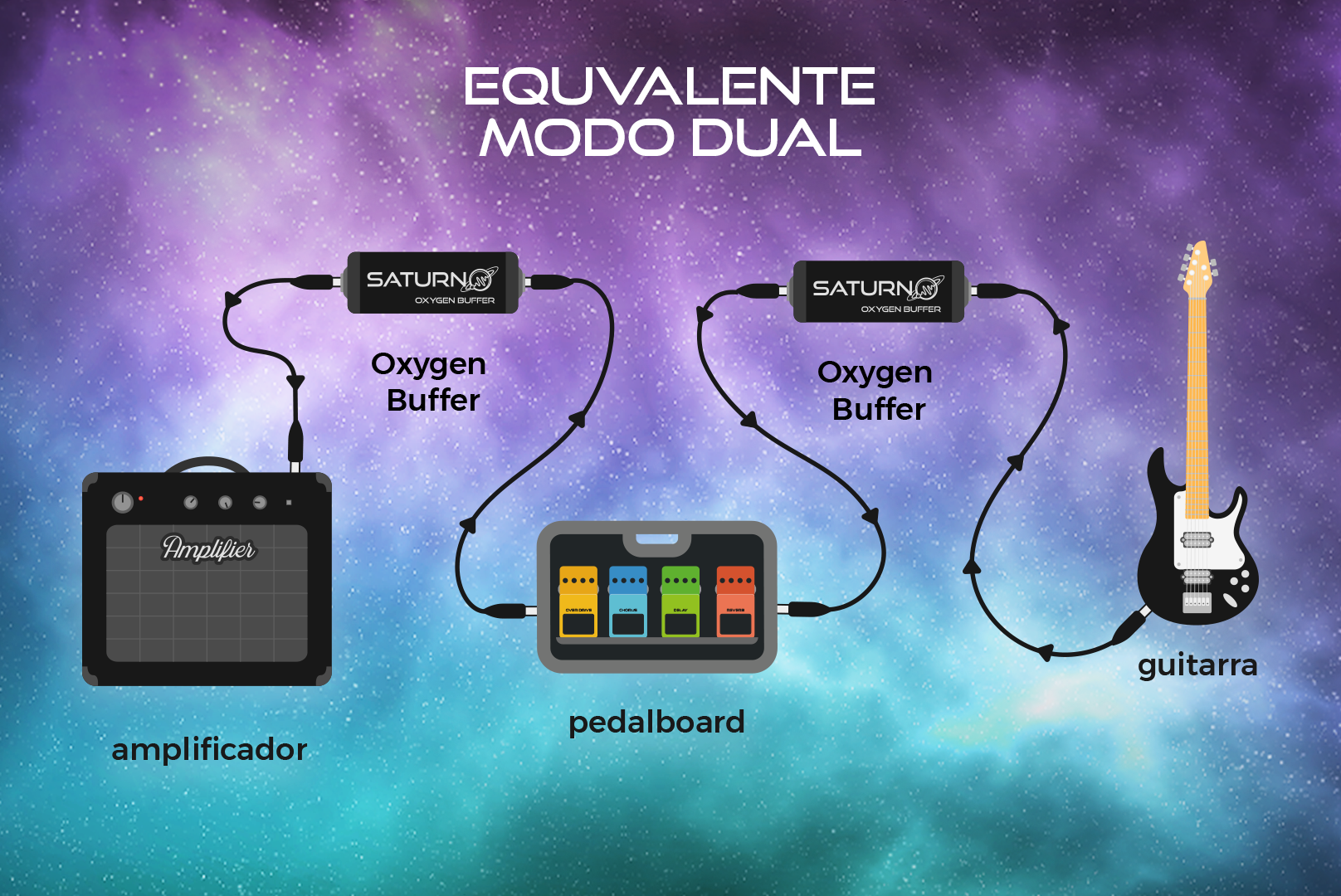
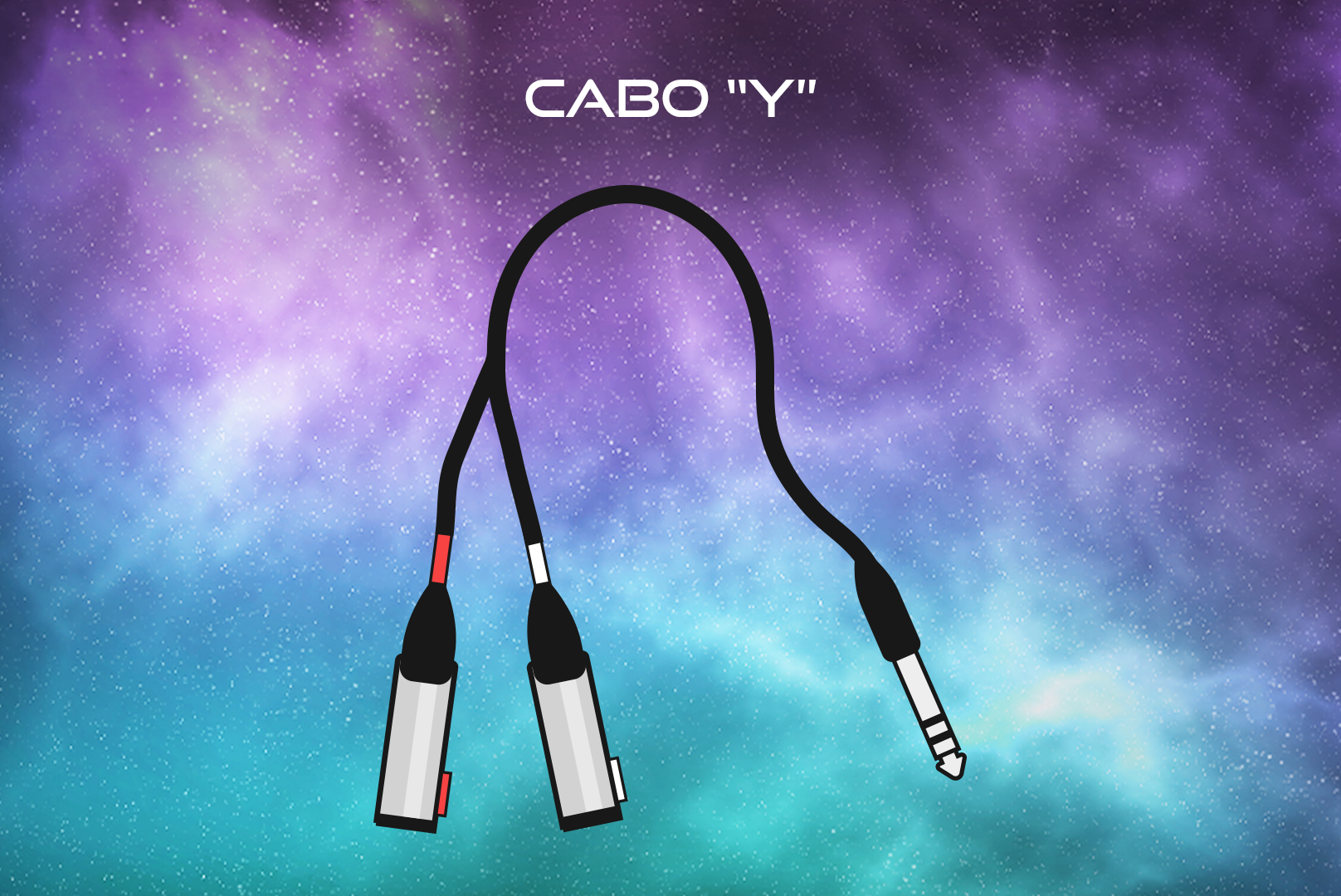
This switch is used to select the operating mode of the Buffer.
The operating mode diagrams can be found in the manual.
It is recommended to place the Oxygen Buffer as the first device in your signal chain, right after the guitar. In this position, it will provide the most significant benefits to your signal.
However, it’s important to note that the Buffer should be placed after vintage-style Fuzz and Wah pedals, as these effects can alter the tone if they are not directly connected to the guitar.
Additionally, other beneficial positions for the Buffer include:
The electric guitar is known for having a high output impedance. With this high impedance, even a small capacitance present in the cable can create a filter that starts to attenuate the high frequencies, resulting in a loss of brightness in the tone.
By using the Oxygen Buffer, it converts the guitar’s high impedance into a low impedance output. Once the signal is in low impedance, the filtering effect shifts to an ultra-high frequency range, far beyond the audible spectrum. This allows the signal to retain its full integrity, without losing brightness due to the interaction between the guitar and the cable, resulting in a clearer, more accurate, and faithful tone.
Additionally, another advantage of low output impedance is the improved impedance matching between the guitar and the effects/amp. This ensures that 100% of the signal is transmitted to the effect or amplifier, whereas a high-impedance signal suffers losses. This better impedance matching contributes to a stronger signal transmission, delivering a punchier and more dynamic reproduction of the guitar’s tone.